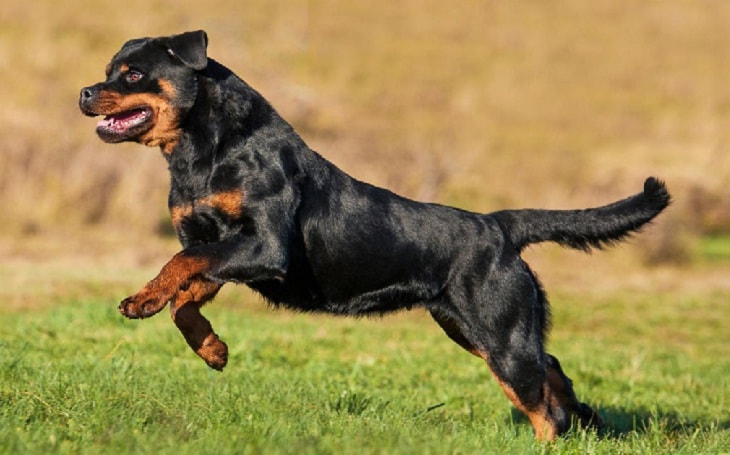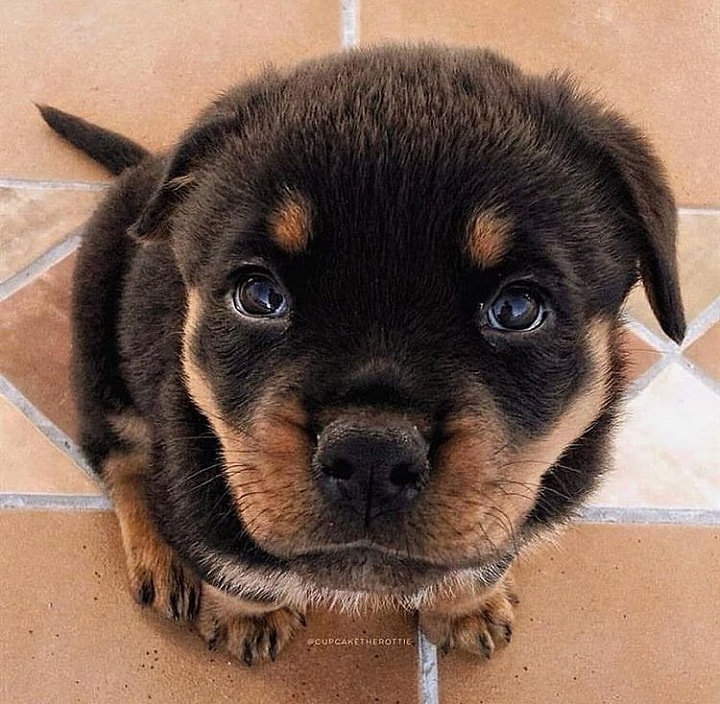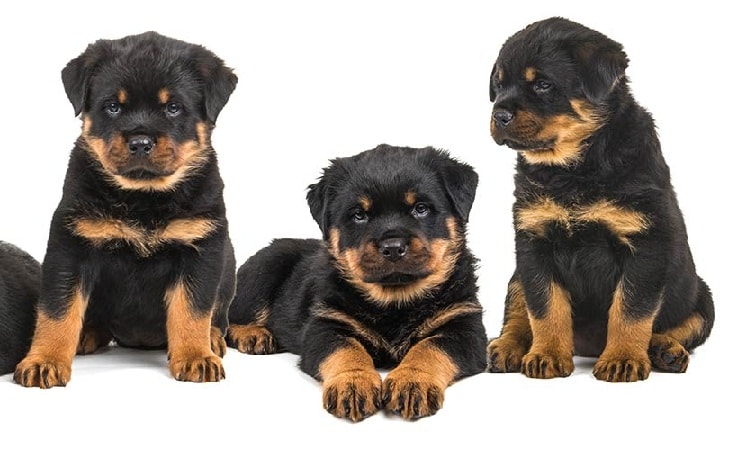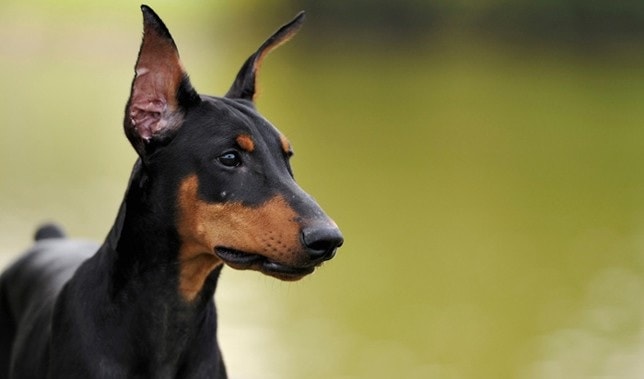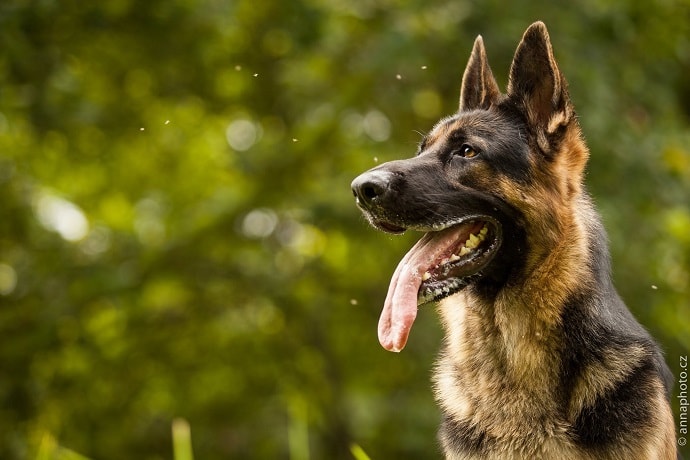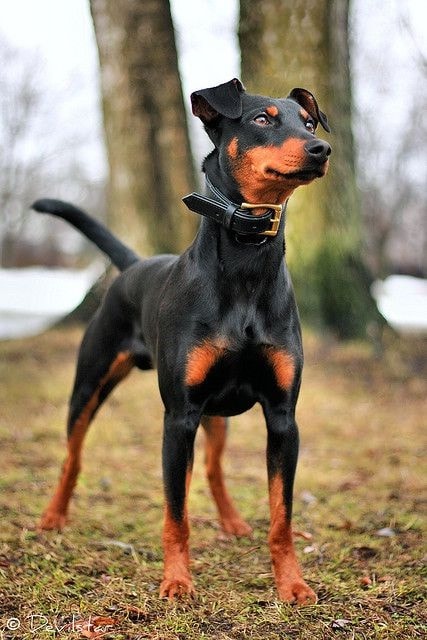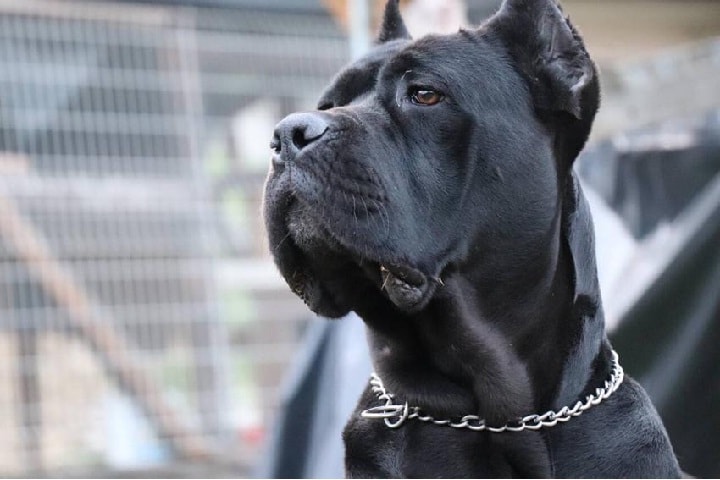Rottweiler Dog Breed Information
| Country of Origin | Germany |
| Nicknames and Other Names | Rottie Rott |
| Scientific Name | Canis lupus familiaris |
| Breed Type | Purebred |
| Group | Working Group |
| Bred For | Herding livestock, pulling carts |
| Size | Medium to large-sized |
| Recognized By | AKC, UKC, CKC, KC< FCI, ANKC, NZKC |
| Life Span | 9-10 years |
| Ideal Weight | Male: 95-135 pounds Female: 80-100 pounds |
| Ideal Height | Male: 24-27 inches Female: 22-25 inches |
| Fur Type | Double-coated, hard, thick, short |
| Common Colors | Black and Mahogany Black and Tan Black and Rust |
| Markings | None |
| Availability | Widely available |
| Achievements | Police dogs, military dogs |
| Suitable for Apartments | Not Suitable |
| Used in World War | Used in both World War as a Police Dogs |
| Most Similar To | Cane Corso |
Rottweiler is a medium to large-sized dog breed which is very popular in USA, UK, and Canada. They are strong and powerful dogs that can be dangerous around unfamiliar people.
They are very famous as a family companion and if raised properly and socialized, they are gentle and loving. As a powerful dog, it is not suitable for a novice dog owner who cannot handle it and guide it in the right direction.
Rottweiler has a compact and muscular body which gives it powerful and strong looks. The male has heavier bones than bitches. The head is of medium length and broad between the ears. Their eyes are round with an alert and self-assured expression. The coat is short, dense and straight where the short coat is on head, ears, and legs.
Origin and History
The Rottweiler was originated in Germany and known as one of the most ancient dog breeds. They used to accompany the Romans to herd the cattle through German. They were given the work to drive cattle to the market, pull carts, guard the homestead, and even bring money from the market o the belt around their neck.
When the railroad cattle cars were developed in the 1800s, Rottweiler’s career in livestock ended. After that, they were taken to work at military, property protector and family guardian.
In 1971, the Rottweiler parent club was formed. The American Kennel Club admitted it in the Stud Book in 1931 and the official standard was approved in 1935.
Is Rottweiler Child-Friendly?
The Rottweiler is friendly with children if raised together. A well-bred Rottweiler will do fine around children. Due to their high prey drive, they sometimes tend to herd small children. So, they should be supervised and should be taught how to behave around children.
Kids should be watched while they are interacting with Rottweiler, as they have a strong body that might fall and hurt them.
Temperament, Behavior, and Personality
Temperament: The temperament Rottweiler is loyal and loving. As a pet, they are fun, entertaining to be with, who loves to play and make its people laugh. However, they are not so friendly with strangers and can be aggressive around them. Therefore, early socialization with a variety of people is needed to avoid unnecessary aggression.
Behavior: A well-bred Rottweiler is never an aggressive dog. So before buying, its breeding background should be checked. They need vigorous exercise, and if they do not get their required activities, they will show their destructive nature by chewing whatever they can reach. Therefore, they should be engaged in regular exercise that fulfills their activities requirements.
Personality: The Rottweiler has an independent, confident, and courageous personality. They are very protective of their loved ones, which makes them an extremely great watchdogs. They are loving and affectionate to their family and they tend to guard its family properties.
Trainability
Training Rottweiler is a hard task to do as they are independent and tend to become dominant sometime. They are also stubborn which makes it tough if the master is a novice owner. They need a confident leader who can train them with confidence and consistency.
After giving them a basic obedience training, enroll them in an agility training which will keep them mentally stimulated. As a reward, give them treats and vocal praises that keeps them motivated and encouraged.
Facts
- Rottweiler is one of the earliest police dogs that served with honor in the military.
- It is believed to be one of the descendants of Roman drover dogs.
- In the 19th century, when the railroads were made to transport livestock in the market, Rottweiler nearly became extinct.
Health Issues
| General Health | Healthy |
| Common Health Issues | Elbow Dysplasia, Allergies, Aortic Stenosis, Subvalvular Aortic Stenosis, Osteosarcoma, Panosteitis |
| Hypoallergenic | No |
| Vaccination Required | Canine Coronavirus, Rabies, Kennel Cough, Canine Distemper, Canine Parvovirus, Leptospirosis, Canine Parainfluenza |
| Shedding | Moderate Shedder |
| Drooling | Drools quite a lot |
| Grooming | Minimal Grooming Required |
| Weight Gain Potential | High |
| Separation Anxiety | High Chance |
| Allergies | Skin Allergy |
| Diets and Supplements | Protei: 30% Fat: 10% Omega-3 and 6 Fatty Acids Glucosamine Antioxidants |
- Elbow Dysplasia: It is a genetic problem. The malfunction of the elbow joints is called elbow dysplasia. The dog will put its leg up while walking as it causes pain in the elbow bones. It can be determined by doing an x-ray and if the case is serious, consult your vet for the surgery.
- Hypothyroidism: It is caused due to the deficiency of thyroid hormones. The effects are infertility, obesity, mental dullness, and getting tired quickly. It should be
consulted with a vet and medication should be given throughout the dog’s life.
Colors
Rottweiler comes in following colors:
- Black and Mahogany
- Rust and Black
- Black and Tan
Puppies

Image Source: Instagram-@dailyrottweilersusa 
Image Source: the happy puppy site
Cost: The average cost of the Rottweiler puppy is $1500-$2500 USD. However, the cost can reach up to $4000 with the quality of the breeder.
Height and Size: The average height of the male Rottweiler is between 24-27 inches and female is 22-26 inches. However, the average weight of the male is 95-135 pounds and the female is 80-100 pounds.
Similar Dog Breeds to Rottweiler
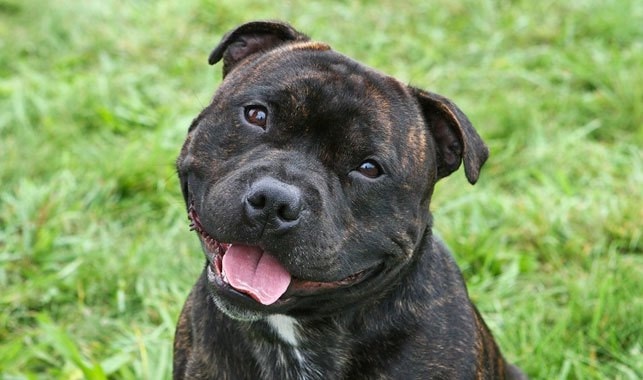
Staffordshire Bull Terrier
Visit Doglime for more information about dog breeds history, behavior, training, and puppies.
Tags
